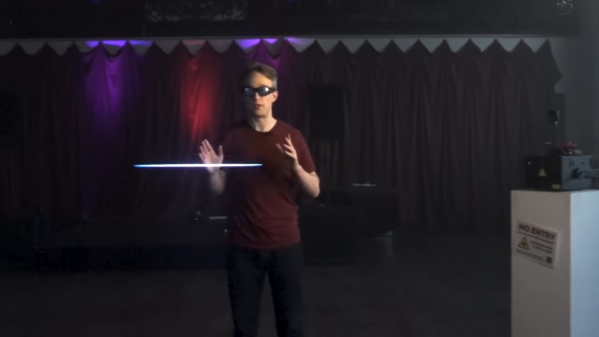Right off the bat, we’ll say that this video showing a laser beam stopping in mid-air is nothing but a camera trick. But it’s the trick that’s the hack, and you’ve got to admit that it looks really cool.
It starts with the [Tom Scott] video, the first one after the break. [Tom] is great at presenting fascinating topics in a polished and engaging way, and he certainly does that here. In a darkened room, a begoggled [Tom] poses with what appears to be a slow-moving beam of light, similar to a million sci-fi movies where laser weapons always seem to disregard the laws of physics. He even manages to pull a [Kylo Ren] on the slo-mo photons with a “Force Stop” as well as a slightly awkward Matrix-style bullet-time shot. It’s entertaining stuff, and the effect is all courtesy of the rolling shutter effect. The laser beam is rapidly modulated in sync with the camera’s shutter, and with the camera turned 90 degrees, the effect is to slow down or even stop the beam.
The tricky part of the hack is the laser stuff, which is the handiwork of [Seb Lee-Delisle]. The second video below goes into detail on his end of the effect. We’ve seen [Seb]’s work before, with a giant laser Asteroids game and a trick NES laser blaster that rivals this effect.
Continue reading “Camera And Code Team Up To Make Impossible Hovering Laser Effect”













